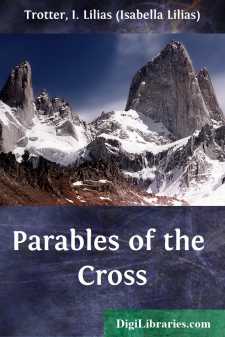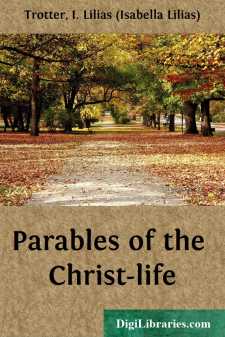Categories
- Antiques & Collectibles 13
- Architecture 36
- Art 48
- Bibles 22
- Biography & Autobiography 813
- Body, Mind & Spirit 142
- Business & Economics 28
- Children's Books 15
- Children's Fiction 12
- Computers 4
- Cooking 94
- Crafts & Hobbies 4
- Drama 346
- Education 46
- Family & Relationships 57
- Fiction 11828
- Games 19
- Gardening 17
- Health & Fitness 34
- History 1377
- House & Home 1
- Humor 147
- Juvenile Fiction 1873
- Juvenile Nonfiction 202
- Language Arts & Disciplines 88
- Law 16
- Literary Collections 686
- Literary Criticism 179
- Mathematics 13
- Medical 41
- Music 40
- Nature 179
- Non-Classifiable 1768
- Performing Arts 7
- Periodicals 1453
- Philosophy 64
- Photography 2
- Poetry 896
- Political Science 203
- Psychology 42
- Reference 154
- Religion 513
- Science 126
- Self-Help 84
- Social Science 81
- Sports & Recreation 34
- Study Aids 3
- Technology & Engineering 59
- Transportation 23
- Travel 463
- True Crime 29
Parables of the Cross
Categories:
Description:
Excerpt
There was deep insight in those old words. For man's natural thought of death is that of a dreary ending in decay and dissolution. And from his standpoint he is right: death as the punishment of sin is an ending.
But far other is God's thought in the redemption of the world. He takes the very thing that came in with the curse, and makes it the path of glory. Death becomes a beginning instead of an ending, for it becomes the means of liberating a fresh life.
And so the hope that lies in these parable lessons of death and life is meant for those only who are turning to Him for redemption. To those who have not turned, death stands in all its old awful doom, inevitable, irrevocable. There is no gleam of light through it for them.
* * * * * * * *"The death of the Cross"--death's triumph hour--that was the point where God's gate opened; and to that gate we come again and again, as our lives unfold, and through it pass even on earth to our joyful resurrection, to a life each time more abundant, for each time the dying is a deeper dying. The Christian life is a process of deliverance out of one world into another, and "death," as has been truly said, "is the only way out of any world in which we are."
"Death is the gate of life." Does it look so to us? Have we learnt to go down, once and again, into its gathering shadows in quietness and confidence, knowing that there is always "a better resurrection" beyond?
It is in the stages of a plant's growth, its budding and blossoming and seed-bearing, that this lesson has come to me: the lesson of death in its delivering power. It has come as no mere far-fetched imagery, but as one of the many voices in which God speaks, bringing strength and gladness from His Holy Place.
Can we not trace the sign of the Cross in the first hint of the new spring's dawning? In many cases, as in the chestnut, before a single old leaf has faded, next year's buds may be seen, at the summit of branch and twig, formed into its very likeness: in others the leaf-buds seem to bear its mark by breaking through the stem blood-red. Back in the plant's first stages, the crimson touch is to be found in seed-leaves and fresh shoots, and even in the hidden sprouts. Look at the acorn, for instance, as it breaks its shell, and see how the baby tree bears its birthmark: it is the blood-red in which the prism ray dawns out of the darkness, and the sunrise out of the night. The very stars, science now tells us, glow with this same colour as they are born into the universe out of the dying of former stars.
Be it as it may in nature, it is true, at any rate in the world of grace, that each soul that would enter into real life must bear at the outset this crimson seal; there must be the individual "sprinkling of the Blood of Jesus Christ." It must go out through the Gate of the Cross.
And here is the needs-be. Death is the only way out of the world of condemnation wherein we lie. Shut into that world, it is vain to try by any self-effort to battle out; nothing can revoke the decree "the soul that sinneth it shall die."
The only choice left is this....



